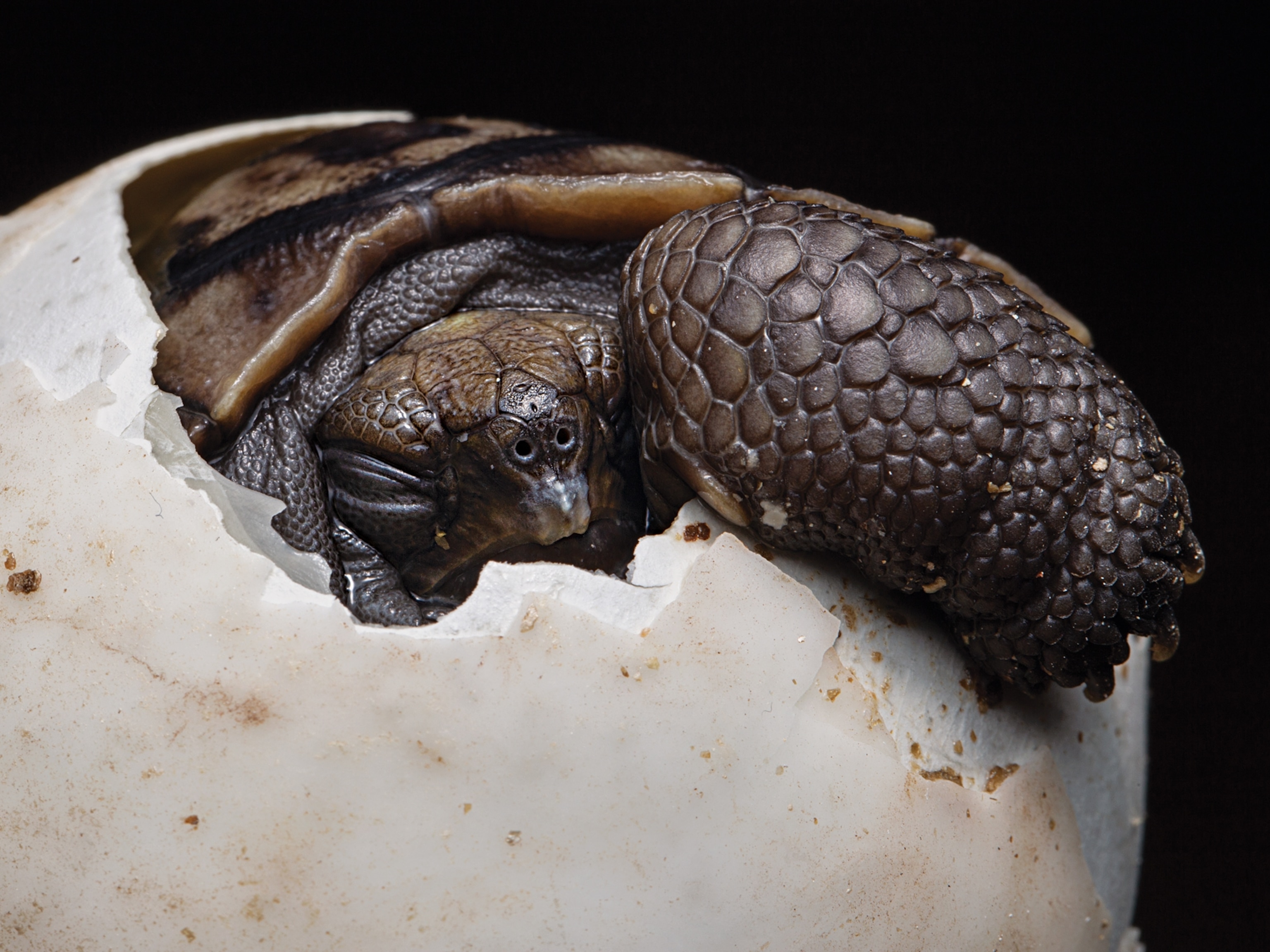
Healthy Diet Helps 183-Year-Old Tortoise Feel Young Again
Jonathan, the world's oldest known animal, is regaining his health after eating more nutritious foods.
"What a drag it is getting old," the Rolling Stones famously sang. And nobody knows that more than Jonathan, the 183-year-old Aldabra giant tortoise that's thought to be the oldest known living animal on Earth.
Old age has caught up with Jonathan, robbing him of his senses of sight and smell and, until a few years ago, relegating him to an unhealthy diet of twigs on the British island territory of St. Helena (map), off Africa's western coast.
But in 2014, local veterinarian Joe Hollins noticed Jonathan's plight and started giving the reptile a more nutritious menu, which includes apples, carrots, cucumbers, bananas, and guava.
A year later, Jonathan is back in the news—and seemingly healthier, according to Hollins' latest update on a St. Helena information website.
"The feeding has improved him surprisingly," Hollins wrote on December 7.
"His once blunt and crumbly beak has become sharp and lethal, so he was probably suffering from microdeficiencies [sic] of vitamins, minerals and trace elements." (Also see "Is Exotic Diet Giving Giant Tortoises a Boost in Galapagos?")
Colonial Food
Also known as the Seychelles giant tortoise, the Aldabra giant tortoise can grow up to 550 pounds (250 kilograms) and is native to several islands in the Indian Ocean.
Most island populations of the species went extinct in the 18th and 19th centuries as people hunted them for food. Today, the International Union for the Conservation of Nature lists the tortoises as vulnerable to extinction. (Also see "Never, Ever Interrupt Mating Giant Tortoises.")
While most of the world’s remaining population of wild Aldabra giant tortoises lives on the Aldabra Atoll (map), an outer island of the Seychelles near Madagascar, Jonathan has been living on Saint Helena since 1882.
According to the Seychelles News Agency, he was likely a gift to the British governor at the time, and still lives on the grounds of the governor's plantation house.
"There is a chance that he’ll either drop dead tomorrow or live until he’s 250 and see us all off," Hollins wrote.
A Tortoise of a Different Color
Many people have never heard of the Aldabra giant tortoise, and might even mistake the species for its cousins found half a world away on the Galápagos Islands. But these tortoises are quite different.
Aldabra giant tortoises “are much more interesting and sociable than most people would expect,” says Justin Gerlach, the scientific coordinator for the Nature Protection Trust of Seychelles. (See "Can Extinct Giant Tortoises Be Brought Back to Life?")
In the wild, they form groups or herds that like to congregate in open grasslands.
And “in captivity, if kept well, they will seek out human company,” says Gerlach. Some of the tortoises even like to be stroked, he says.
While Aldabra tortoises are mostly safe from hunting today, Gerlach says there is a far greater danger to the species.
The Aldabra Atoll is only three to six feet (one to two meters) above sea level, and scientists are predicting the world’s oceans to rise as much as four feet (about a meter) by the year 2100.





